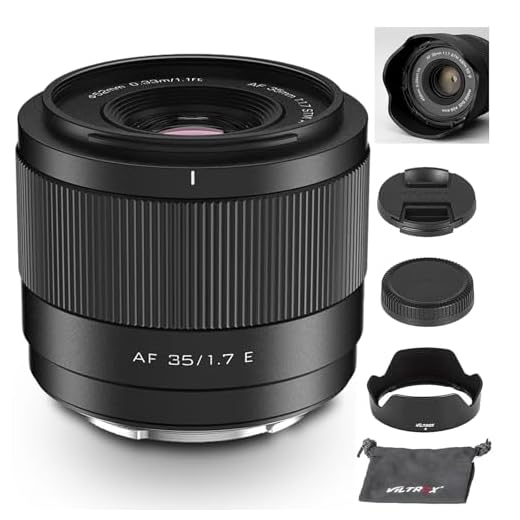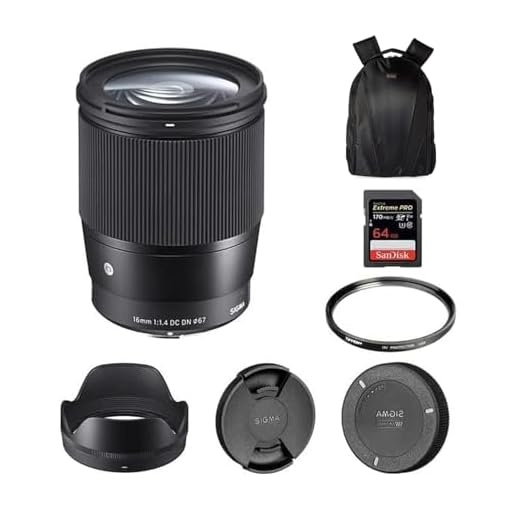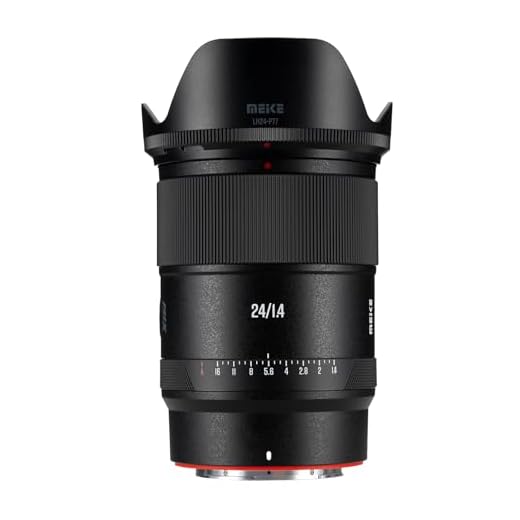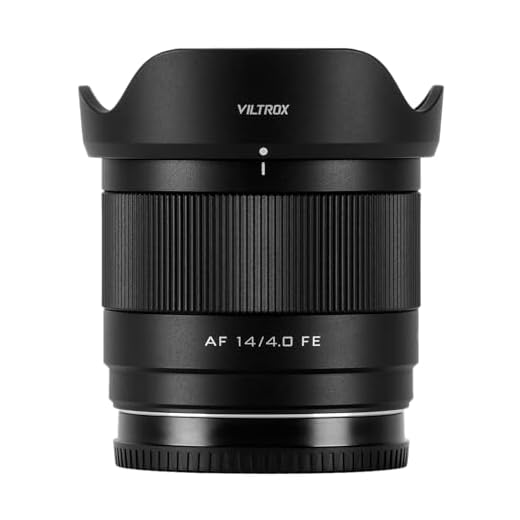



If you’re seeking high-quality glass to elevate your outdoor photography, I’ve compiled a list that will certainly enhance your shooting experience. My focus is on providing you with information about specific optics that excel in capturing breathtaking vistas, detailed close-ups of foliage, and expansive cityscapes. Each recommendation meets a blend of durability, sharpness, and versatility, ensuring your creativity is met with the technical perfection required to bring your vision to life.
This article will serve as a valuable resource for both amateur and seasoned shooters looking to expand their kit. I will cover various focal lengths and features that can enhance your shots, including weather sealing for those unpredictable conditions and image stabilization to help you achieve crisp results even in turbulent environments.
You will find detailed insights into each option’s characteristics, including a range of prices and compatibility with your gear. Whether you’re capturing sweeping mountain ranges or intimate forest scenes, this guide will assist you in selecting the right tools to suit your artistic needs. From wide-angle options for expansive views to versatile zoom models for varied compositions, my aim is to provide you with a concise overview of what’s available for your photographic adventures.
Best Landscape Lenses for E-Mount Cameras
Choosing the right optics can significantly enhance your photographic output. I have found that ultra-wide and wide-angle choices are pivotal when capturing expansive views and grand vistas.
Sharpness and reduced distortion are key factors to consider. Pay attention to maximum apertures as well; many scenarios benefit from faster glass that allows for greater control over depth of field.
Key Features to Evaluate
- Focal Length: Preferably, look for a range between 14mm and 35mm for expansive scenes.
- Aperture: A wider aperture can provide versatility, especially in low-light conditions.
- Optical Performance: Assess sharpness, contrast, and chromatic aberration control.
- Weight and Size: Consider portability if hiking or traveling to remote locations.
Quality glass can dramatically elevate image clarity. When making a decision, I’d recommend testing samples to assess how they handle contrasting light and focus accuracy.
| Feature | Benefit |
|---|---|
| Weather Sealing | Protection against elements while shooting outdoors. |
| Image Stabilization | Reduces blur from camera shake, especially useful in low light. |
| Filter Compatibility | Utilizes ND and polarizing filters for creative control. |
In conclusion, understanding your shooting requirements will help narrow down choices. A well-chosen tool will facilitate the expression of creativity and vision effectively.
Prime Lenses for Exceptional Clarity and Detail
When seeking the highest level of detail in my photography, I often turn to prime optics renowned for their sharpness and clarity. The absence of complex moving parts in these fixed focal length options results in images that stand out with stunning realism. I appreciate how these options deliver excellent contrast and vibrant color rendering, making every scene pop.
Prime options excel in minimizing distortion and chromatic aberration. This allows me to capture intricate textures and details that might otherwise be overlooked. Each shot reveals a level of precision that enhances the overall quality of my work. Whether photographing expansive vistas or intimate close-ups of nature, I find that the benefits of using these well-crafted glass elements far outweigh the limitations of fixed focal lengths.
Unmatched Optical Performance
One of the key advantages of utilizing prime optics lies in their ability to produce stunning images with minimal optical flaws. The design typically features fewer elements, which results in superior light transmission and clarity. Additionally, a wide maximum aperture allows for excellent low-light performance and creative depth of field control.
- Image Quality: Exceptional sharpness across the frame.
- Light Gathering: Larger apertures suitable for various lighting conditions.
- Contrast: Rich, vibrant colors and enhanced detail.
In my experience, prime optics also encourage a more thoughtful approach to composition. Their fixed nature prompts me to move and explore different perspectives, which often leads to more dynamic images. This hands-on engagement with the environment brings a unique sense of connection that is often reflected in the final result.
| Feature | Benefit |
|---|---|
| Fixed Focal Length | Encourages composition creativity |
| Wide Aperture | Great low-light performance and depth of field control |
| Simpler Design | Minimized optical aberrations |
Choosing prime options not only enhances the clarity and detail of my photographs but also transforms my approach to capturing images. The commitment to image quality that these optics provide is evident in every snap, making them an integral part of my photographic toolkit.
Wide-Angle Options to Capture Expansive Scenery
Choosing wide-angle options allows me to convey the vastness and grandeur of nature in my photographs. These tools enable me to capture more of the scene in a single frame, enhancing the feeling of space and depth.
When selecting the right model, I focus on factors such as aperture, distortion control, and minimum focusing distance. A wider aperture offers the ability to create impressive depth of field, isolating subjects against breathtaking backdrops.
Important Features to Consider
- Aperture: A lens with a large maximum aperture provides great performance in low-light conditions, which is beneficial during sunrise or sunset captures.
- Distortion: Higher quality options minimize barrel distortion, preserving straight lines and improving image quality.
- Focusing Distance: Short minimum focusing distance enhances versatility, enabling me to shoot both expansive scenes and close-up details.
Beautiful landscapes often include varied elements from foreground to background. Wide-angle models amplify this, allowing me to include interesting foreground subjects that lead the viewer’s eye into the image.
Ultimately, my selection hinges on how well each option incorporates these features while delivering exceptional sharpness and clarity. I find that wide options open a world of creative possibilities, making every shot a unique representation of the scenery.
Zoom Lenses for Versatility in Various Landscapes
When exploring the outdoor world, having the right optical device can significantly enhance the experience. I find that a versatile zoom option allows for quick adjustments to different environments, from sweeping vistas to intricate details in nature. The ability to change focal length without switching equipment is invaluable during dynamic shooting conditions.
These versatile optics typically cover a wide range of focal lengths, making them suitable for diverse geographical features. With the capacity to capture expansive scenes or tight compositions, these instruments grant a flexibility that primes me for spontaneous photography adventures. The convenience of zooming means I can swiftly adapt to changing light and subjects, ensuring that I don’t miss the perfect moment.
Key Advantages of Zoom Options
- Wide Range of Focal Lengths: This feature allows me to capture everything from grand landscapes to close-up details seamlessly.
- Convenience: The ability to zoom in and out minimizes the need to carry multiple units, thus reducing gear weight and bulk during hikes.
- Creative Flexibility: Changing perspectives on the fly encourages experimentation with composition, enhancing the artistic possibilities of each shot.
- Quick Adaptation: Switching from a broader view to a focused shot helps me react swiftly in unpredictable conditions.
Investing in a high-quality zoom can transform the way I capture natural beauty. As I wander through various terrains, this option remains my go-to for its practicality and creative potential. By leveraging the versatility of zoom, I can truly immerse myself in the photographic experience, regardless of the environment I find myself in.
Lightweight and Portable Choices for Hiking Photographers
When hiking, I prioritize lightweight and compact options to ensure my gear remains manageable. I recommend considering a few specific characteristics when selecting equipment that won’t weigh me down on the trail. A smaller footprint and reduced weight can significantly enhance the overall experience without compromising image quality.
Opting for a shorter focal length can help capture expansive scenes while keeping the setup portable. Additionally, a wide maximum aperture allows for versatility in various lighting conditions, making it easier to adapt while hiking.
Features to Look For
- Weight: Aim for options that are lightweight, making it easy to carry for extended periods.
- Focal Length: Consider a range that offers versatility, allowing for both wide and some portrait shots.
- Build Quality: Weather-resistant features help protect against the unpredictability of outdoor conditions.
- Compatibility: Ensure the equipment integrates seamlessly with your current system for a hassle-free experience.
In addition to these factors, the ergonomic design of the gear plays a significant role in comfort during hikes. This means looking for designs that balance weight distribution and are easy to handle. Combining these elements can elevate the photography experience while enjoying nature.
Weather-Sealed Optics for All-Conditions Shooting
Capturing stunning images in unpredictable weather requires reliable equipment. Choosing weather-sealed optics enhances my confidence when shooting in rain, snow, or harsh environments, as these designs offer robust protection against moisture and dust. The intricate sealing mechanisms usually include rubber gaskets that cover moving parts, additional coatings on external elements, and a thoughtful placement of seals to block entry points for water and debris.
While shooting outdoors, I appreciate how authentic weather-sealing allows me to focus on composition rather than worrying about sudden changes in conditions. Optics with this feature can withstand splashes and brief exposure to wet conditions, typically rated to handle various environments without compromising durability or performance. The ability to operate effectively in less-than-ideal circumstances means I can pursue my vision regardless of conditions.
Advantages of Weather-Sealed Optics
- Durability: These models are constructed with materials that resist wear and tear from the elements, ensuring longevity.
- Peace of mind: Knowing my equipment is protected allows me to focus entirely on my creative process.
- Enhanced performance: Despite adverse circumstances, weather-proof optics typically maintain their optical quality, providing sharp and clear images.
- Versatility: I can confidently shoot in diverse conditions without the need for frequent equipment changes.
Understanding the specifications and build of each optic aids in making informed choices. I seek out reviews that discuss experiences in various conditions, which often highlight the real-world effectiveness of the sealing mechanisms. This firsthand feedback is invaluable in evaluating how reliable a particular model might be during outings. Exploring weather-resistant options inspires me to engage with nature more freely, capturing moments without hesitation.
Fast Apertures for Stunning Golden Hour Shots
To capture the beauty of golden hour, I prefer using fast apertures that create a soft background blur while letting in enough light to illuminate the scene. Wide openings, like f/1.4 or f/2.8, enhance bokeh effects, enriching the overall aesthetic of twilight shots.
During these magical moments, the warm tones and dynamic hues become exceptionally pronounced. My experience indicates that utilizing a shallow depth of field allows for better focus on foreground elements, while still beautifully blending the background. This technique is especially useful for isolating subjects against an expansive horizon.
Key Techniques for Optimal Results
- Choose the Right Time: Plan your shooting schedule to be on-site at least 30 minutes before sunset. This gives you time to scout angles and experiment with compositions.
- Utilize Grad ND Filters: These help in balancing exposure between the bright sky and darker landscape, which is crucial when shooting with wide apertures.
- Experiment with Shutter Speed: Fast apertures can let in a lot of light; adjusting shutter speed is essential to avoid overexposure.
- Post-Processing: Softly enhancing colors in editing software can complement the warm tones captured during the golden hour.
Each setting is unique, and modifying your approach based on available light and desired outcomes will lead to impressive captures. Emphasizing dynamic range and detail in shadow areas complements the brilliant highlights often present during this time of day.
In conclusion, mastering the use of fast apertures opens up tremendous potential for breathtaking imagery as the day transitions into night and nature reveals its stunning palette. Embrace the golden hour, and you’ll find endless creative opportunities in every shot.
Budget-Friendly Options without Compromising Quality
One of my favorite options is the Sony E 18-200mm f/3.5-6.3 OSS LE. This versatile zoom offers a broad focal range, making it great for varied scenes while maintaining decent optical performance. The built-in optical stabilization enhances my handheld shooting experience, especially in low light.
Another great pick is the Tamron 11-20mm f/2.8 Di III-A RXD. This ultra-wide-angle option allows for creative perspectives and low-light capabilities due to its fast aperture. It’s compact and lightweight, which works well for outdoor adventures.
Quality doesn’t always mean high spending. Here’s a quick overview of some budget-friendly picks:
- Sony E 18-200mm f/3.5-6.3 OSS LE – Ideal for versatility and stabilization.
- Tamron 11-20mm f/2.8 Di III-A RXD – Excellent for wide angles and low light.
- Sigma 16mm f/1.4 DC DN – Great for low-light performance and sharpness.
- Rokinon 12mm f/2.0 NCS CS – Affordable and offers impressive image quality.
Choosing affordable gear can still yield outstanding images. Research and hands-on testing allows me to select options that fit my budget without sacrificing performance.
Best landscape lenses for e-mount cameras
Features
| Part Number | Q-0814-03529-01 |
| Warranty | 3 Year Manufacturer |
| Color | black |
| Size | 14/4.0 FE (for Sony) |
Features
| Part Number | SEL2470GM |
| Model | SEL2470GM |
| Warranty | 1 year coverage for parts |
| Color | Black |
| Release Date | 2016-03-31T00:00:01Z |
| Size | Lens Only |
| Language | English |
Features
| Part Number | ESUS-VT-00057 |
| Model | 35mm f1.7 |
| Warranty | 1 year |
| Color | Black |
Features
| Part Number | SIG402965-KIT |
Features
| Part Number | MK-2414FFSTM-E |
| Warranty | 1-Year |
| Size | 24mm F1.4 Full Frame |
FAQ:
What are the key features to consider when choosing landscape lenses for e-mount cameras?
When selecting lenses for landscapes with e-mount cameras, several key features should be evaluated. First, consider the focal length, as wider angles, like 16-35mm, can capture expansive scenes. Aperture is also important; a lens with a wider aperture allows for better low-light performance and depth of field control. Image stabilization can be beneficial for clarity, especially in varying lighting. Additionally, look for lenses with good optical quality to avoid distortion and chromatic aberration, ensuring sharp images. Compatibility with filters is also a plus for landscape photography.
Can you recommend some specific e-mount lenses that are great for landscape photography?
Several e-mount lenses stand out for landscape photography. The Sony FE 16-35mm f/4 ZA OSS is a popular choice for its versatile zoom range and sharpness. The Tamron 11-20mm f/2.8 Di III-A RXD offers ultra-wide capabilities with a constant aperture, making it great for dramatic perspectives. For those seeking prime options, the Sony FE 24mm f/1.4 GM delivers excellent image quality and low-light performance. Lastly, the Sigma 35mm f/2 DG DN is another solid option, providing a well-rounded focal length for capturing vast scenes with clarity.
How do different focal lengths impact the composition of landscape photos?
Focal lengths play a significant role in the composition of landscape photos. Wide-angle lenses, typically in the range of 16-24mm, are excellent for capturing sweeping vistas and foreground interest, allowing the photographer to include more of the scene in the frame. These lenses can create a sense of depth and scale, making landscapes feel more immersive. On the other hand, standard focal lengths, such as 35mm-50mm, can focus more on specific elements within a landscape, allowing for greater detail in subjects like mountains or trees. Telephoto lenses, starting around 70mm, compress the scene and can isolate particular components of a landscape, helping to guide the viewer’s eye to specific features. Each focal length offers a unique way to represent landscapes, enabling diverse storytelling through composition.








